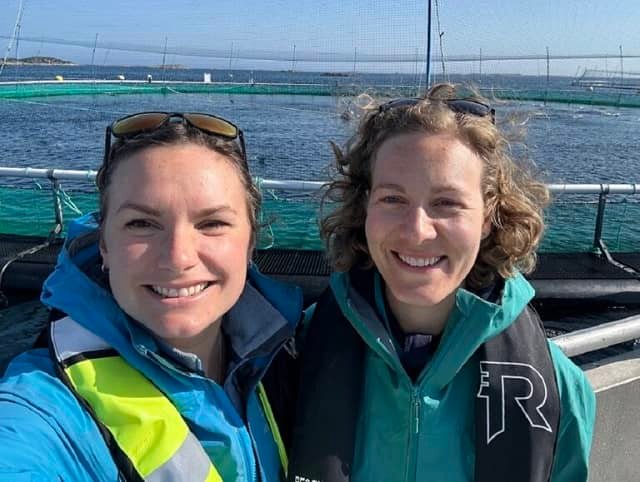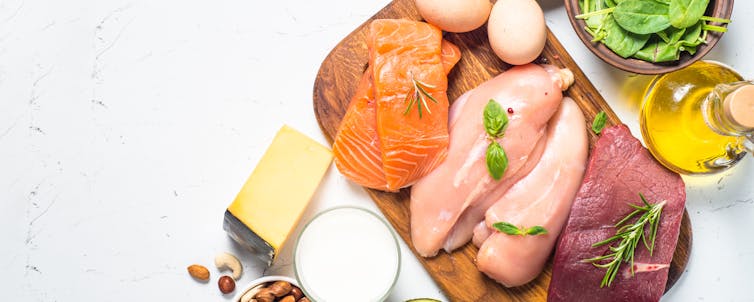
A recent study conducted by researchers from the Federal University of Viçosa and Embrapa concludes that the use of feed additives based on chicken liver protein hydrolysates can improve the health of tilapia raised in intensive systems.
This finding is of great scientific and economic importance, as Brazil, being a major chicken meat producer, has abundant raw materials for protein hydrolysate production.
When testing the use of chicken liver protein hydrolysate in tilapia feed, the researchers observed a reduction in the formation of carbonyl proteins in the fish’s gills.
The presence of carbonyl proteins usually indicates that damage is occurring to the cells of living organisms. Carbonylated protein levels serve as a biomarker of protein oxidative damage.
The low presence of carbonylated proteins in fish fed with chicken liver protein hydrolysates indicated that this additive was preventing and reducing the occurrence of cellular damage and, eventually, avoiding the death of the animals. This is because oxidative imbalance can lead to reduced food consumption, slower growth rate, impaired defense system activity, and increased susceptibility to diseases, explained Juliana Gomes from the Laboratory of Applied Physiology to Fish Farming at the Federal University of Viçosa (UFV).
Cellular injuries in fish
Cellular injuries in fish are common because, when raised intensively in ponds, they go through various stressful situations, such as during classification handling when they are exposed to air, leading to decreased oxygen uptake through the gills, explained Jenner Zuanon, a professor in the Department of Animal Biology at UFV.
According to Zuanon, stress situations like these generate a series of metabolic disorders, and one of them is the production of reactive oxygen species, which release free radicals that damage the cells. The same happens to us when we are stressed.
Use of feed additives
Embrapa Environment researcher Hamilton Hisano highlights that the use of feed additives can be an effective strategy to help protect fish from these stress situations.
Stay Always Informed
Join our communities to instantly receive the most important news, reports, and analysis from the aquaculture industry.
“Feed additives are strategies used to increase food consumption, nutrient utilization efficiency, and stress tolerance under intensive management conditions,” explained Hisano.
This new knowledge opens up possibilities for innovative nutritional strategies that can optimize fish health and productivity in the aquaculture industry.
Protein hydrolysates
The protein hydrolysates, additives evaluated in the study, can improve the fish’s ability to tolerate and recover from the effects of management practices that involve air exposure. This ingredient is commonly used as a substitute for fishmeal but has also been evaluated as an additive due to its capacity to modulate physiological processes.
The researchers evaluated the effect of chicken liver protein hydrolysate as a feed additive on the productive performance of Nile tilapia raised in a water recirculation system and investigated stress responses and redox status after an air exposure challenge.
“At the end of the experiment, we did not observe a significant effect of chicken liver protein hydrolysate on productive performance variables or body indices,” reported the study.
However, regarding redox status, the researchers observed a quadratic effect of supplementation on malondialdehyde levels, as well as on the activities of superoxide dismutase, catalase, and glutathione S-transferase. “The optimal supplementation levels of chicken liver protein hydrolysate were estimated at 25.14, 25.91, 22.57, and 18.83 g/kg, respectively, for these redox parameters,” they highlighted.
Economic importance
The research also highlights the economic importance of additives, as fish feed can represent up to 70% of total production costs. Replacing traditionally used ingredients with less expensive alternatives, such as plant-based ones, can be an efficient way to reduce costs.
Additionally, the study draws attention to the fact that Brazil, being one of the world’s major chicken meat producers, has a large amount of raw materials for protein hydrolysate production.
The chicken viscera, such as the liver, accounts for around 37% of live weight, making this byproduct a sustainable and cost-effective alternative for additive production, emphasized Gomes.
Fabiana Dieterich from Falbom Agroindustrial Ltda reinforces the importance of the research. “This kind of knowledge generated by research demonstrates that the interaction between public research institutions and the industry can contribute to solving problems in the production chain,” she said.
Conclusion
“Although supplementation with chicken liver protein hydrolysate improved antioxidant enzyme activity and attenuated protein damage, it simultaneously increased the production of reactive oxygen species and lipid peroxidation,” the researchers concluded.
However, they also recommend further studies to elucidate the underlying mechanisms of action by which protein hydrolysates influence the redox state of fish raised in intensive systems.
This study is part of the partnership established between the Federal University of Viçosa and Embrapa Environment with research on additives and is also part of the BRS Aqua project, which investigates various aspects of aquaculture, including tilapia, tambaqui, cobia, and marine shrimp.
The project is funded by the National Bank for Economic and Social Development (BNDES), the Special Secretariat of today’s Ministry of Aquaculture and Fisheries (Seap), and the Ministry of Aquaculture and Fisheries (MPA), as well as by Embrapa itself.
Reference
Juliana Rodrigues Gomes, Alex Júnio da Silva Cardoso, Hamilton Hisano, Renata Maria Pereira de Freitas, Karina Ventura Boechat Martins, Filipe Silveira Azevedo, Mariella Bontempo Freitas, Pollyanna de Moraes França Ferreira, Ana Lúcia Salaro, Jener Alexandre Sampaio Zuanon. 2023. Redox status of juvenile Nile tilapia, Oreochromis niloticus (Linnaeus, 1758), fed diets supplemented with poultry liver protein hydrolysate as feed aditive, Animal Feed Science and Technology, Volume 303, 2023, 115711, ISSN 0377-8401, https://doi.org/10.1016/j.anifeedsci.2023.115711.
Editor at the digital magazine AquaHoy. He holds a degree in Aquaculture Biology from the National University of Santa (UNS) and a Master’s degree in Science and Innovation Management from the Polytechnic University of Valencia, with postgraduate diplomas in Business Innovation and Innovation Management. He possesses extensive experience in the aquaculture and fisheries sector, having led the Fisheries Innovation Unit of the National Program for Innovation in Fisheries and Aquaculture (PNIPA). He has served as a senior consultant in technology watch, an innovation project formulator and advisor, and a lecturer at UNS. He is a member of the Peruvian College of Biologists and was recognized by the World Aquaculture Society (WAS) in 2016 for his contribution to aquaculture.




